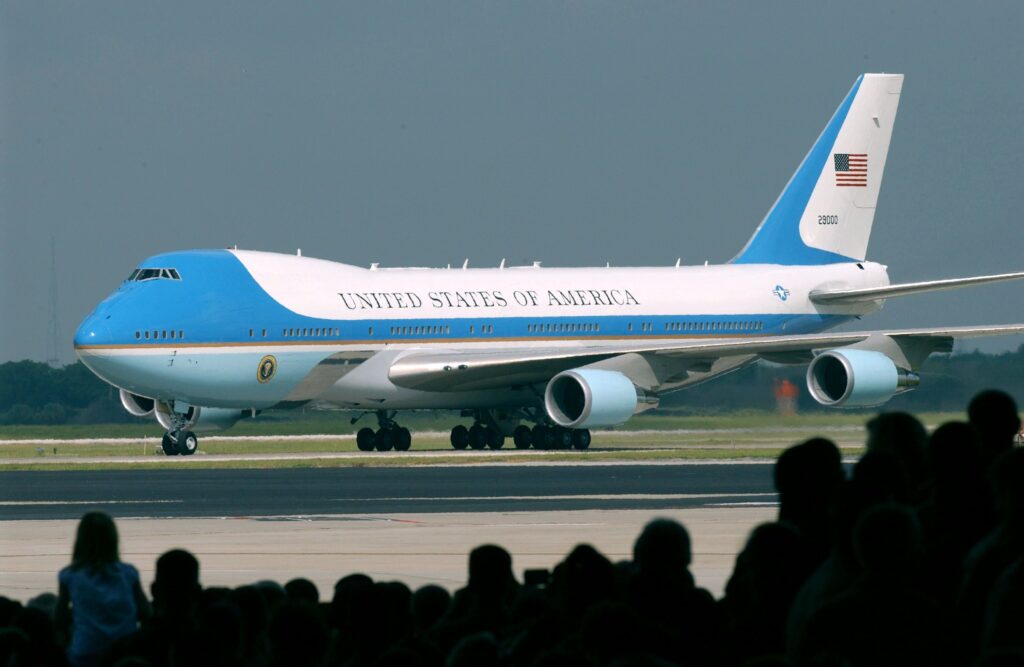Air Force One Back In Budget; Airbus Unlikely To Bid
Posted on
UPDATED: Adds FYDP Budget Plans To Spend $1.65 Billion On New Air Force One
WASHINGTON: Airbus, Boeing’s only likely competitor, probably won’t bid on the new Air Force One even though the Presidential Aircraft Replacement program has reappeared in the 2015 budget.
“Airbus could put together a dramatic candidate for Air Force One,” Allan McArtor, the new CEO of Airbus subsidiary Airbus Americas, told reporters at breakfast today when asked by my colleague Steve Trimble. But, and it was a very large but, the prestigious but highly complex aircraft (special engines, MANPAD protection, EMP hardening, National Command Authority communications etc. etc.) presents “a tough business case” as it would require a “tremendous amount of modifications” to a very small fleet.
While McArtor didn’t say no, he did say he “would find it unlikely” that Airbus would bid on the program. That would, of course appear to put incumbent Boeing squarely in the catbird seat.
The VC-25, as Air Force One is known, will hit the end of its planned 30-year operational life in 2017. While the aircraft are unlikely to start falling apart by then, the date does serve as a benchmark. An industry day was held Dec. 11 and 12 last year.
One analyst who has closely watched the Pentagon’s recent and so far hapless efforts to build presidential aircraft says, “there is no chance at all that Airbus will provide a future presidential aircraft,” consultant Loren Thompson said in an email. “First, its planes are technically inferior to Boeing’s. Second, the level of secrecy precludes foreign participation. Third, the politics are impossible.”
There’s not a lot of money in the 2015 request that I can find — $11 million — but we’ve pinged the Air Force to get the full extent of the funding across the five years of the Future Years Defense Plan (FYDP). The new planes wouldn’t be delivered until after 2021, at the earliest. The entire program will probably be worth north of a billion dollars, if previous estimates are any guide. UPDATE: The Air Force plans to spend $1.65 billion over the FYDP, according to numbers they supplied March 11. The breakdown is:
FY15: $11.006
FY16: $103.302
FY17: $490.794
FY18: $518.092
FY19: $527.951
That’s a significant increase over last year’s plans, which called for spending $1.14 billion through fiscal 2018. Of course, the serious money is all in the out years, which to Washington insiders means it’s magic money for now. UPDATE ends.
For those who can remember all the way back to the Northrop Grumman-EADS (now Airbus) bid against Boeing for the airborne tanker, the poisonous politics of Buy America rhetoric (check the percentages of foreign content of most Boeing airplanes if you want to get some perspective) will be all too fresh in your memory.
But there appears to be a wrinkle here. I understand the Air Force is weighing a new acquisition strategy, one that would allow a company to buy a commercial plane and then modify it instead of building the plane from scratch. The P-8 might be a good example.
But Thompson is, to put it mildly, skeptical whether that would bring in anyone else to partner with Airbus. “If Airbus is foolish enough to bid with some hapless U.S. partner, it will merely repeat the role it played in the tanker competition of driving down the price of Boeing’s winning bid,” he says.
Subscribe to our newsletter
Promotions, new products and sales. Directly to your inbox.

